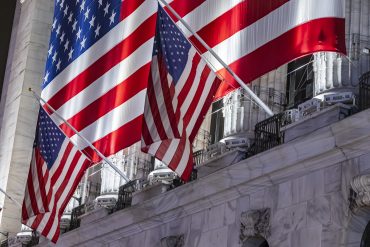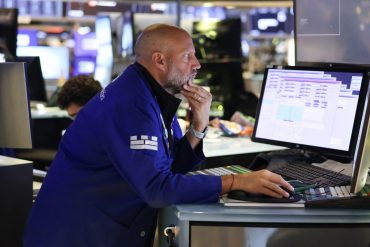
- Federal Reserve
- Nasdaq
- S&P 500
S&P 500 and Nasdaq Hit Record Highs on Rate Cut Outlook
5 minute read

Stock market optimism surges as cooling inflation data strengthens Federal Reserve rate cut expectations for September
Key Takeaways
- S&P 500 and Nasdaq hit multiple record highs this week with both indices gaining nearly 1% over five trading sessions driven by cooling inflation data and Fed rate cut expectations.
- Cisco Systems beats Q4 earnings expectations with AI infrastructure orders exceeding $800 million in the quarter, though HSBC downgrade triggers 5.5% Friday decline.
- Five major companies reach record peaks including Goldman Sachs at $749.05, BlackRock at $1,171.89, and Nvidia at $184.48 as tech sector momentum continues.
Introduction
Wall Street delivered a powerful week of gains as both the S&P 500 and Nasdaq indices posted fresh record highs amid growing expectations for Federal Reserve interest rate cuts. The benchmark S&P 500 achieved record closes on Tuesday, Wednesday, and Thursday, while the tech-heavy Nasdaq set new peaks on Tuesday and Wednesday.
The rally stems from July’s consumer price index data showing cooling inflation trends, which strengthened market conviction that the Fed will cut rates in September. Despite some Friday afternoon weakness from intraday highs, both indices secured nearly 1% gains across the five-day trading period.
Key Developments
Tuesday’s market surge began with the release of July’s consumer price index, which revealed moderating inflation pressures and immediately boosted rate cut probabilities. The momentum carried through Wednesday as investors digested the implications for monetary policy.
Thursday brought a brief pause when the producer price index showed higher-than-expected wholesale inflation. However, the CME FedWatch tool indicates market expectations for September rate cuts remain largely intact, with traders also pricing in a second reduction by year-end.
The labor market added fuel to the rally with July job growth of 300,000 positions, surpassing economist forecasts and reinforcing economic resilience. Energy stocks gained additional support from rising crude oil prices driven by supply constraints and geopolitical tensions in key producing regions.

Market Impact
The technology sector led the advance with five major companies achieving record highs during the week. Goldman Sachs peaked at $749.05, while BlackRock reached $1,171.89 and Broadcom hit $317.35.
Nvidia extended its AI-driven momentum to $184.48, and Meta Platforms climbed to $796.25. These gains reflect sustained investor appetite for companies positioned to benefit from artificial intelligence infrastructure spending and digital transformation trends.
Eli Lilly emerged as the week’s standout performer with a 12% surge following insider share purchases. The pharmaceutical giant’s rally demonstrates how corporate insider activity continues to influence investor sentiment across sectors.
Strategic Insights
The persistent record-setting performance highlights Wall Street’s confidence in corporate America’s ability to navigate economic uncertainties while delivering growth. Technology companies are fundamentally reshaping their business models through AI integration, with PwC research showing 85% of tech executives believe they possess the capabilities to scale these new approaches.
Semiconductor demand remains particularly robust as companies invest in AI infrastructure. Generative AI chips including CPUs, GPUs, and data center processors are driving double-digit revenue growth projections for the semiconductor industry in 2025.
The data-as-a-product strategy continues gaining traction as companies prioritize secure communication and governance frameworks. Pricing models are evolving toward outcome-based fee structures tied to customer KPIs, helping maintain profit margins in competitive markets.
Expert Opinions and Data
Cisco Systems exemplified both the opportunities and challenges facing tech companies this week. The networking giant reported strong Q4 earnings that exceeded analyst expectations, driven by AI infrastructure demand generating over $800 million in orders for the quarter.
However, weakness in Cisco’s security division led to mixed investor reactions. HSBC’s subsequent downgrade to hold rating triggered a 5.5% decline on Friday, illustrating how quickly sentiment can shift even amid strong fundamental performance.
Portfolio activity remained active with additional share purchases in Starbucks and Palo Alto Networks during market sell-offs. Complete exits from positions like Coterra Energy reflect ongoing sector rotation as managers adapt to changing economic conditions.
Conclusion
The week’s record-setting performance across major indices reflects strong underlying corporate fundamentals and favorable monetary policy expectations. Technology sector leadership demonstrates continued investor confidence in AI infrastructure spending and digital transformation initiatives.
Federal Reserve policy decisions remain the primary catalyst for near-term market direction, with traders positioned for potential volatility around upcoming announcements. The balance between innovation investment and responsible governance practices will determine whether current momentum can sustain through evolving economic conditions.








